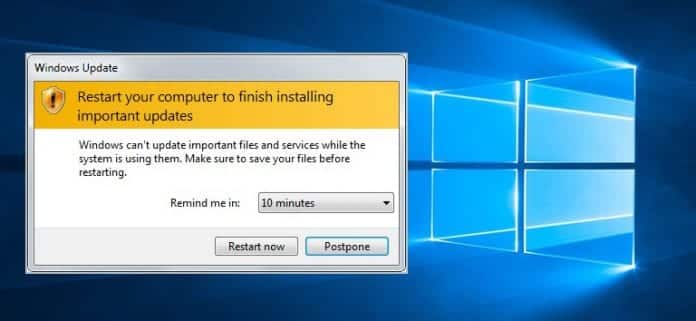Is it important to restart the computer after installing a software or update?
Have you ever wondered why do we need to restart our computers after installing new software and at other times we don’t need to? Is there any reason why it needs this reboot or why it’s not always one way or the other?
The answer is that it depends. If the software being installed affects an integral part of the operating system then a restart is required. For instance, a new kernel for the operating system. Sometimes, a piece of software will make a change that cannot come into effect while the computer is use. Other reasons might be – a file is in use, as a result, the change can only occur during boot up of the computer. Also, there could be a security issue that can only be done before the computer has its networking active, maybe the virus scanner would interfere with the install.
Most often when you install new software DLL (file) that is used by many other software packages, it needs to be upgraded to a new version. If the DLL is being used by a running application, part of it will be loaded into memory and the rest will be read from disk when it is needed. Therefore, the DLL will be locked on disk.
A DLL that is locked cannot be updated, so the installer will ask windows to replace the DLL with the new version the next time the machine is restarted. Hence, there is a need for a restart. Some better installers will tell you the applications that should be closed down before running the installer, which means that the DLL can be updated without a restart.
Generally, restarts between install and running are because you are replacing system DLLs that are locked. Restarting allows the changes to be made in a safe way without interfering with active tasks. It also allows system security that processes monitor changes to system files to ensure that unauthorised changes aren’t made.
While, in case of Windows, Microsoft has done a great job minimizing reboots, but, as a precautionary measure, the company as well as 3rd party software publishers will prompt you for a reboot whether or not one it is required from the software install. In the case of Linux, most of times the computer doesn’t require a restart unless it is an important upgrade related to kernel. Similarly, in the case of Apple’s MacOS, a restart is required only after a system update.
Despite improvements in technology, there’s no apparent end in sight for the restart cycle. As computer usage moves increasingly into web apps and cloud interfaces, the idea of needing to restart may seem more and more mysterious.

